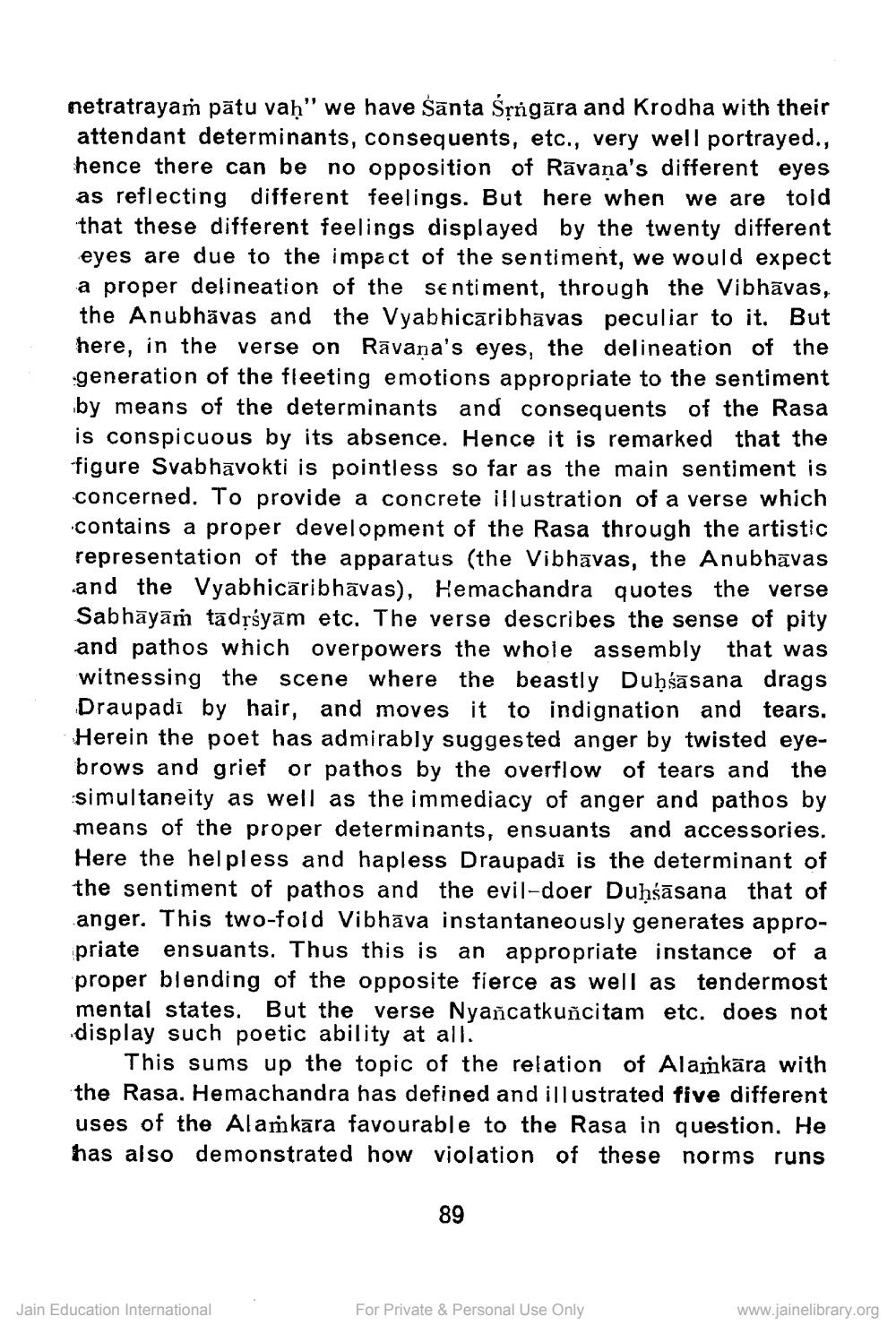________________
netratrayaṁ pātu vaḥ" we have Santa Śṛngāra and Krodha with their attendant determinants, consequents, etc., very well portrayed., hence there can be no opposition of Ravana's different eyes as reflecting different feelings. But here when we are told that these different feelings displayed by the twenty different eyes are due to the impact of the sentiment, we would expect a proper delineation of the sentiment, through the Vibhāvas, the Anubhavas and the Vyabhicāribhāvas peculiar to it. But here, in the verse on Ravana's eyes, the delineation of the generation of the fleeting emotions appropriate to the sentiment by means of the determinants and consequents of the Rasa is conspicuous by its absence. Hence it is remarked that the figure Svabhāvokti is pointless so far as the main sentiment is concerned. To provide a concrete illustration of a verse which contains a proper development of the Rasa through the artistic representation of the apparatus (the Vibhavas, the Anubhavas and the Vyabhicaribhavas), Hemachandra quotes the verse Sabhāyām tādṛśyam etc. The verse describes the sense of pity and pathos which overpowers the whole assembly that was witnessing the scene where the beastly Duḥsasana drags Draupadi by hair, and moves it to indignation and tears. Herein the poet has admirably suggested anger by twisted eyebrows and grief or pathos by the overflow of tears and the simultaneity as well as the immediacy of anger and pathos by means of the proper determinants, ensuants and accessories. Here the helpless and hapless Draupadi is the determinant of the sentiment of pathos and the evil-doer Duḥśāsana that of anger. This two-fold Vibhava instantaneously generates appropriate ensuants. Thus this is an appropriate instance of a proper blending of the opposite fierce as well as tendermost mental states. But the verse Nyañcatkuñcitam etc. does not display such poetic ability at all.
This sums up the topic of the relation of Alamkara with the Rasa. Hemachandra has defined and illustrated five different uses of the Alamkara favourable to the Rasa in question. He has also demonstrated how violation of these norms runs
Jain Education International
89
For Private & Personal Use Only
www.jainelibrary.org




